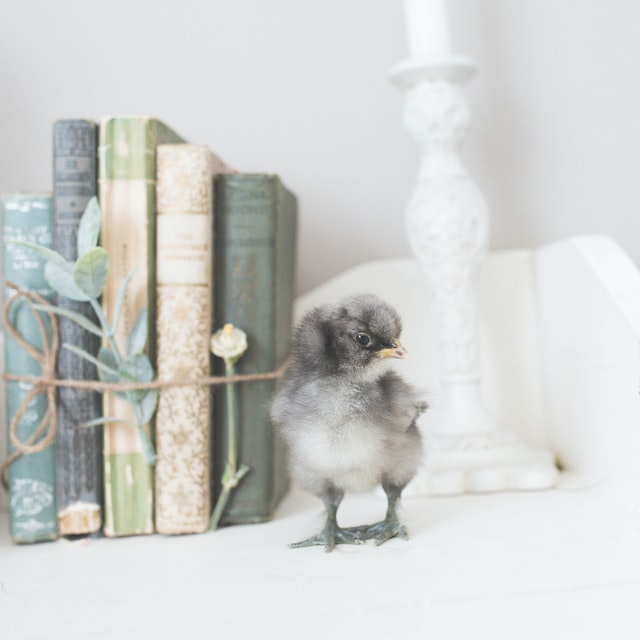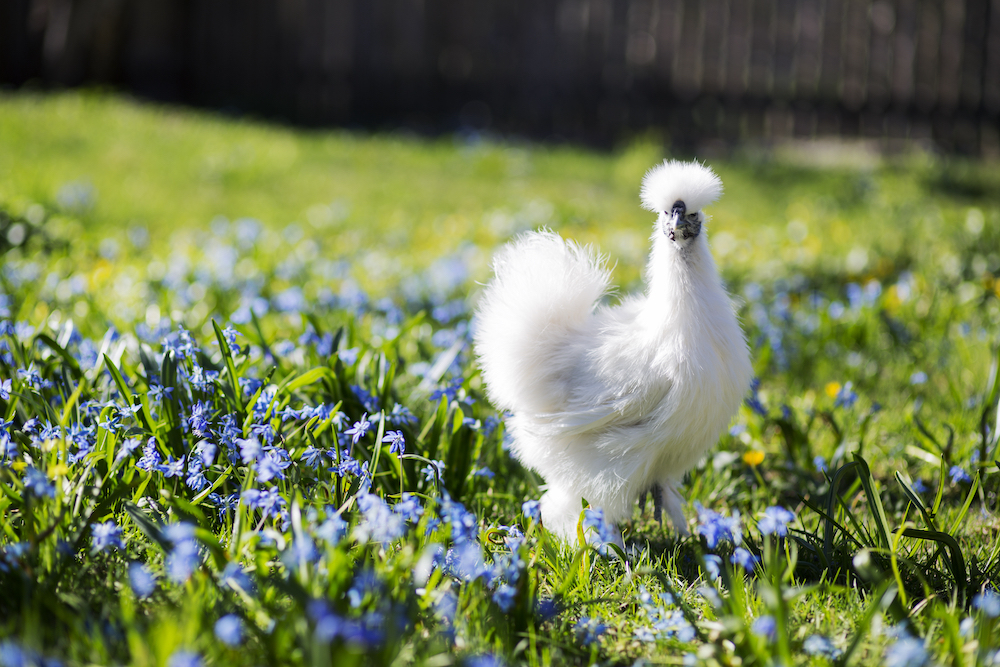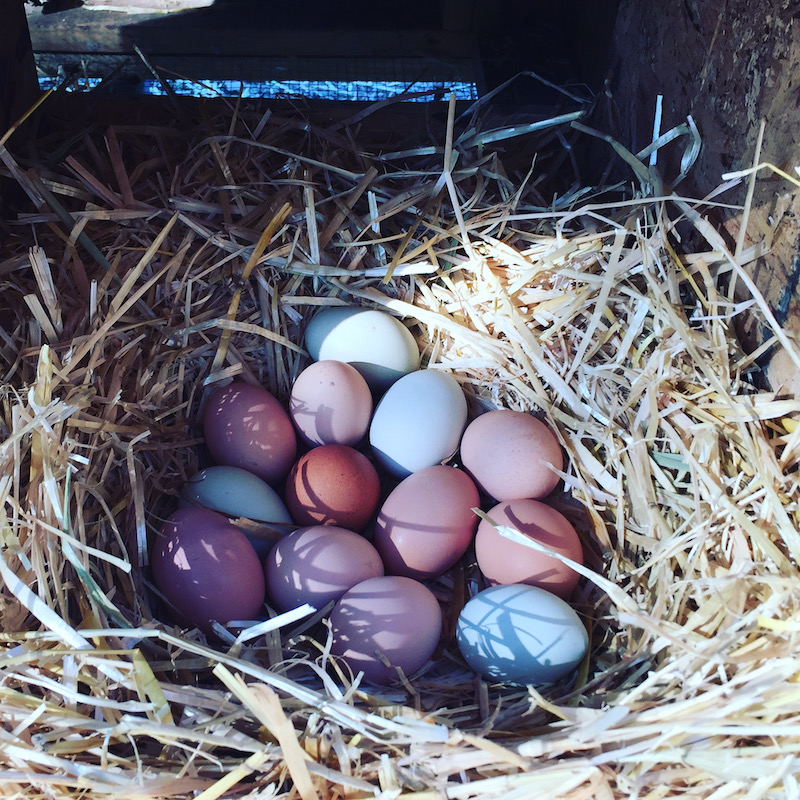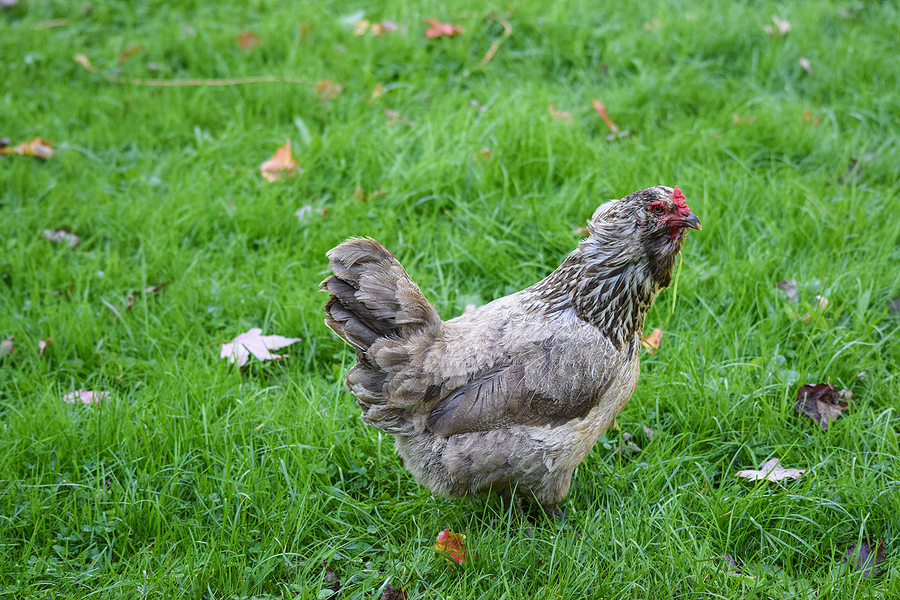Last Updated on February 9, 2024 by AwesomeChickens
Silkie chickens are unique-looking chickens with an exciting-formed plumage. This chicken breed is relatively common across the globe and can be found in most farm stores. If you are considering purchasing a flock of silkies, you should be prepared for years of backyard flock care.
Silkie chickens are a breed of Bantom Chickens and are known to live, on average, seven to nine years. The life expectancy is on the higher side compared to other flocks. With sufficient and proper care, these birds could live even longer.
There are many factors in caring for a silkie to give them a long and happy life. Let’s take a look at what you can do to extend your chicken’s life and keep them comfortable throughout their years.
Table of Contents
What is The Lifespan of a Silkie Chicken?
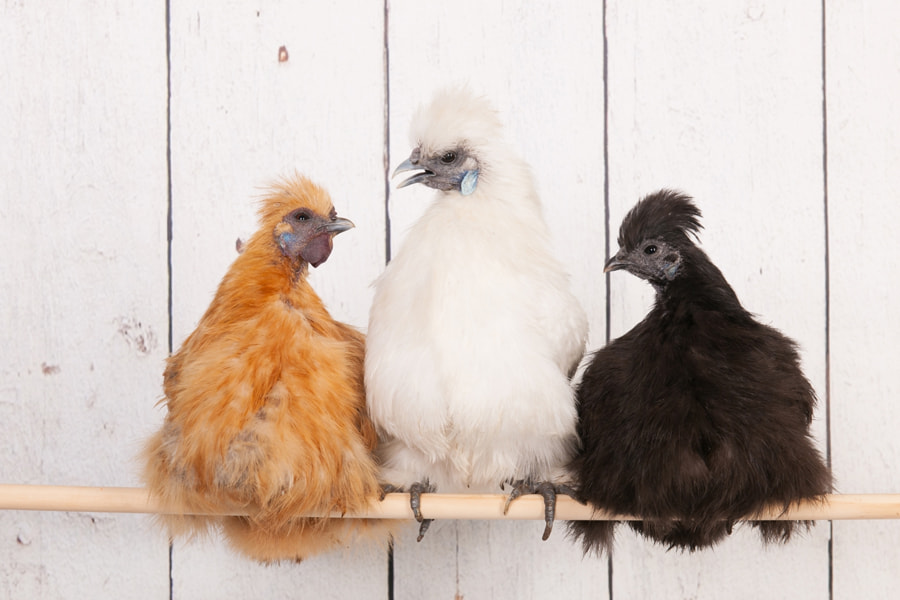
As mentioned above, your silkie chick can live upward of 10 years as long as they are taken care of properly and have everything they need in order to maintain their physical and mental health.
There are many factors that can lead to a Silkie becoming depressed or ill, shortening their lifespan a great deal.
Do Silkie Chickens Get Lonely?
Yes, Silkies, like many other flocks of chickens, are social birds that rely on each other. If a silky is left alone for too long, they can get lonely, which will negatively affect their mental state. They will become stressed, and their deteriorating mental health can lead to death if left untreated for too long.
Silkies need other chickens to keep them warm, comfortable, safe, and to offer companionship. Just like most other types of flocks, Silkies each have a job or role they provide to the rest. It’s like a little backyard community where each member – a silkie hen, a silkie rooster, etc. – performs a duty to keep the rest sustained.
Although Silkies require other birds to remain happy, they can be sustained for a short period of time if needed. So, if you were to lose the majority of your backyard flock due to predators, one Silkie will be fine until you provide more. (In these cases, make sure you pay a visit to your bird frequently until you have more chickens around.)
Do Silkie Chickens Make Good Pets?
Silkie chickens are on the smaller side and are very calm and docile creatures. Because of their mild demeanor and disposition, these chickens would make great pets for a family, especially those with younger children who are interested in raising chickens.
Another reason Silkies are ideal for family pets is that they are unable to fly or even get too far too fast because of their fluffy, crazy plumage. Their plumage also helps to aid them in temperature control and makes them ideal for any type of weather.
Finally, and best of all, Silkie chickens are well-known for being loving and affectionate to those who spend enough time caring for them.
How Long Do Silkie Chickens Lay Eggs?
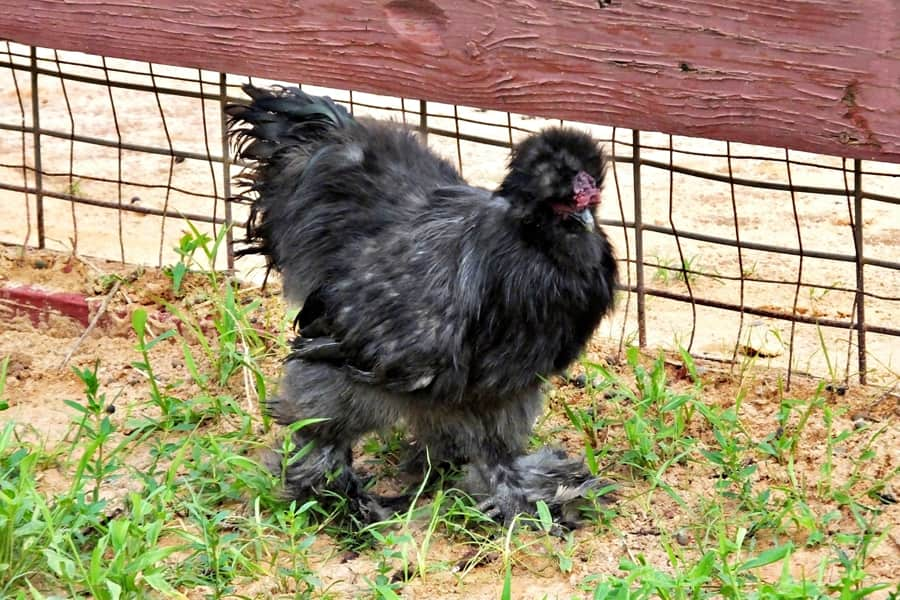
Once again, we must attribute the Silkie’s excellent benefits to their eccentric plumage. Because they are so fluffy, Silkies are able to maintain the proper body temperature to allow them the ability to lay eggs all year long.
With that said, the average amount of eggs you can expect from a Silkie should be around three-to-four eggs per week, giving you a little more than 100 eggs per year.
If you are interested in breeding your Silkies, they are known for being fantastic mothers and brooders and will take very good care of their offspring.
Can You Eat Silkie Chicken Eggs?
If you are not as interested in raising baby Silkies, as you are eating the chicken eggs these birds produce, it is 100% safe to eat a Silkie chicken egg. Although they do not produce many eggs on average, and the ones they do lay are relatively small, these smooth, creamy-colored eggs are eatable and taste great.
What Do Silkie Chickens Look Like?
These bantam chickens are quite different in appearance compared to most other chickens you will typically see. For starters, their skin and bones are black, which is disheartening because it means they are more of a delicacy in some countries.
These chickens also have five toes instead of four, like most other poultry breeds. Their heads are circular and because of the poof in their feathers, they will look like a fluffy pom-pom.
Their beaks are short just like their legs, and their feathers do not hold tightly together, which gives them that fluffy appearance.
These feathers may be cute to look at, but they make it impossible for the birds to fly and they are not waterproof.
What Colors Do Silkie Chickens Come in?
This poultry breed comes in a wide variety of colors, and if you are interested in showing your chickens at a pet show or fair, only a few are accepted.
Accepted colors include:
- Blue Silkies
- White Silkies
- Splash (black or white with “splashes” of blue or black)
- Partridge (a pattern of grey on top with orange and tan colors in the face on its sides, males typically have rusty patches on their bellies)
- Buff (a pinkish-white color)
- Grey Silkies
- Black Silkies
If you are not considering showing your chicken and are just interested in raising them as backyard chickens or pets, they can also come in cuckoo (an array of patterns or spots), lavender, or red.
Are Silikies Easy to Raise?
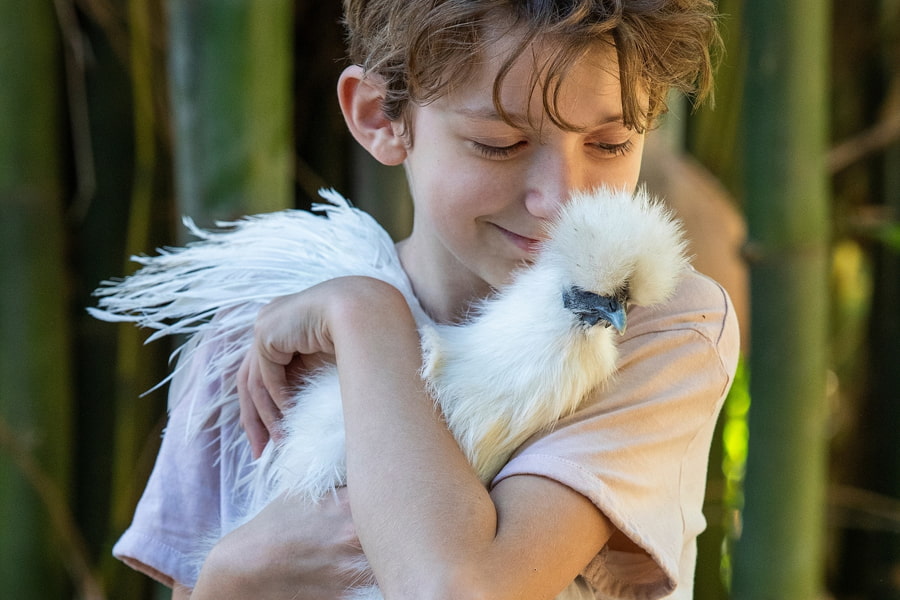
Silkies are an inexpensive and laid-back bird to own, especially if you’re raising them as a pet. Raising baby Silkies to adulthood can provide you with many benefits, including free pest control, free egg accessibility, and a best friend.
All your Silkies need to survive is a well-maintained coop, fresh water, nutritious foods, and care. Giving them free range with an inexpensive, fenced-in area will also prove to be beneficial in maintaining these little birds.
Summing Things Up
Silkies are a great poultry breed that can live up to 10 years or more, as long as they are taken care of properly. These birds are very resilient and can make great pets, but they are also known for being meat birds and raised for their eggs.
If you are looking for a simplistic bird that would be easygoing around kids and very entertaining to look at, the Silkie would be a great option.

